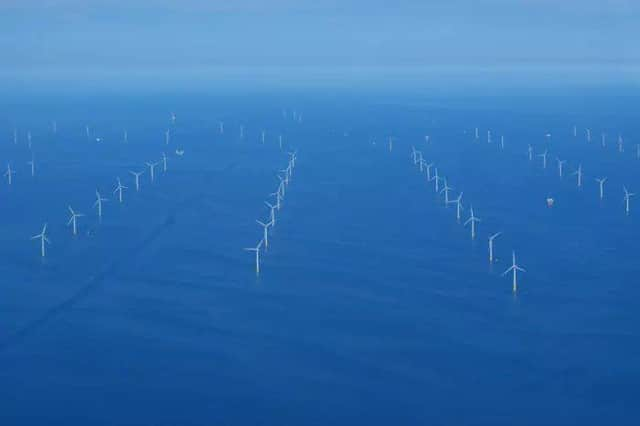Yorkshire '˜now the Saudi Arabia of wind'


The huge wind farms being constructed at four sites in the North Sea are expected to light and heat more than six million homes all year round.
The UK is the world leader in harnessing offshore wind, and could generate enough power for three-quarters of the nation’s homes by the end of the next decade, a report commissioned to coincide with the opening of the Offshore Wind Energy conference, in London, found.
Advertisement
Hide AdAdvertisement
Hide AdThe study also found the UK had the most “economically attractive” offshore wind resources in Europe - nearly three times better than Denmark which is in second place.
Emma Pinchbeck, executive director of the trade body Renewable UK, said the east coast would see the bulk of investment in the new technology.
“It’s going to work best in the regions with the best wind speed,” she said.
“Yorkshire and the east coast is where we are going to see most of the development. The North Sea is where the wind is better and the shallowness of the sea bed means operators can plant turbines at the least cost possible.
“It’s as if we were the Saudi Arabia of wind.”
Advertisement
Hide AdAdvertisement
Hide AdTwo offshore wind farms, the Humber Gateway and Westermost Rough, currently operate off the Yorkshire coast, with larger projects planned at Hornsea and Dogger Bank. Onshore construction at Hornsea began last year, with offshore construction due to begin in 2018 and the first phase of the project operational by 2021.
The 430 sq mile Dogger Bank project, approved two years ago, will see one of the world’s biggest offshore wind farms, with up to 400 turbines sited 80 miles off the coast. It is expected to cost at least £6bn and could supply 2.5 per cent of the UK’s electricity needs, supporting an estimated 900 jobs in the region.
Ms Pinchbeck said: “Hull and Grimsby have seen huge investment in jobs and skills. This is the next industrial revolution, and it’s not just about green technology, it’s about better technology.”
She said the region could expect to see continued investment as the sector expanded.
Advertisement
Hide AdAdvertisement
Hide Ad“A lot of the skills and resources that powered the industrial revolution of the past are still in place. This is the next cycle of the revolution.”
The supply chain for the offshore industry would include not just assembly and construction of the turbines at plants like Green Port Hull, but also steel from inland, she added.
“There is more British steel in an offshore wind farm, than in a gas plant,” Ms Pinchbeck said. “These are big industrial pieces of kit - they’re not just windmills.”
Giles Dickson, chief executive of the European trade body, WindEurope, said wind power could be competitive with other sources of energy “before very long”.
Advertisement
Hide AdAdvertisement
Hide AdHe said: “The cost reduction seen in offshore wind over the last two years could translate into significant volumes of clean, competitive and reliable power for the UK by 2030.”
Much of the investment in the new wind farms has come from overseas. Ms Pinchbeck said: “This is a global market. Most of our energy sector has foreign-owned operators.”